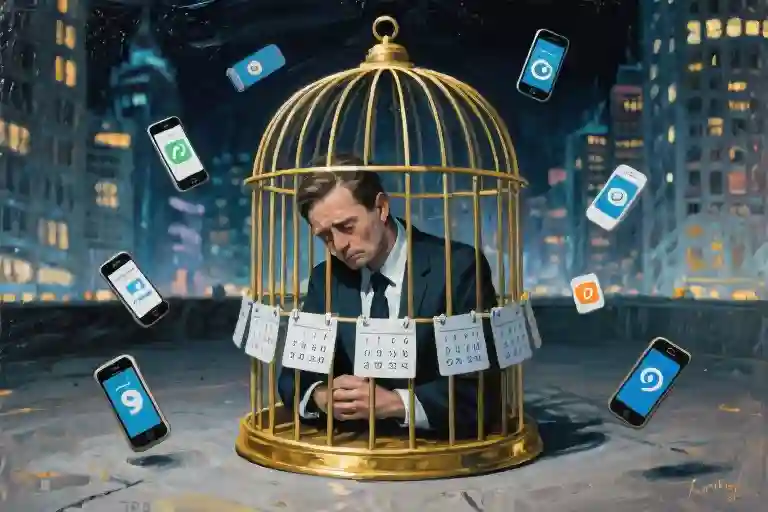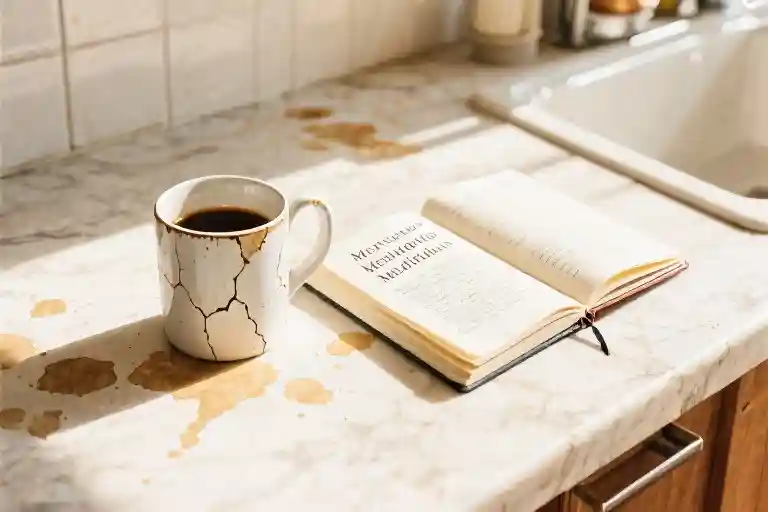Some Sundays don’t arrive with plans. They slip through the cracks of productivity culture like water through fingers – impossible to grasp, unnecessary to contain. These are the days when alarm clocks feel like foreign objects, when to-do lists dissolve into the quiet hum of nothingness.
The morning air carried that particular Sunday stillness, the kind that makes you forget what day it is until you check your phone and realize with quiet relief: no meetings, no deadlines, just time stretching before you like an unpainted canvas. My bones remembered yesterday’s practical exam before my mind did – that specific ache in my wrists from gripping the pen too tightly, the stiffness in my shoulders from hours of concentration. Normally I’d fight it, brew an extra-strong coffee and power through. But not this Sunday.
Outside, the world was performing its daily magic show without an audience. Through the half-open blinds, the sky was mixing its palette – orange bleeding into soft gold at the edges, with whispers of pink sneaking in where you least expected them. I watched a single cloud rearrange itself three times before I even thought about moving. There’s something sacred about these unplanned moments of slow living, when you’re not observing nature so much as participating in it.
We’ve been conditioned to believe every waking moment must serve a purpose, that even leisure requires optimization. But what if the most radical act of self-care isn’t another meticulously planned routine, but the courage to do absolutely nothing? To let the tiredness linger in your bones a little longer, to watch the sky change colors without reaching for your phone? These are the small rebellions that sustain us.
The pink deepened as morning settled in, and with it came a quiet realization: maybe some days exist simply to hold us. Not to make us better, or more productive, but to remind us that being is enough. That sometimes the most important thing you’ll do all day is notice how the light moves across your bedroom wall.
The Lingering Weight in Your Bones
That particular kind of tiredness doesn’t announce itself with yawns or heavy eyelids. It settles deeper, in the marrow of your bones, after days of holding your breath through practical exams and mental gymnastics. My fingers still carried the ghost memory of gripping pens too tightly yesterday, each knuckle whispering complaints when I finally stretched them against the morning light filtering through half-drawn curtains.
I watched the steam rise from my coffee cup in slow spirals, then disappear entirely as the liquid cooled untouched. There’s an unspoken rebellion in letting your coffee go cold – a small act of surrender to the pace your body demands rather than the one your to-do list requires. The air conditioner hummed its steady white noise chorus, underlining the luxury of doing absolutely nothing with intention.
Most mornings, I’d fight this lethargy with cold water splashes and exaggerated stretches. But today felt different. Maybe it was the way the sunlight pooled like liquid gold on the wooden floorboards, or how my muscles seemed to have developed their own gravitational pull against the mattress. So I listened. Not to productivity podcasts or morning meditation guides, but to the quiet insistence of my own weary limbs.
This bone-deep exhaustion after intense focus isn’t just physical. It’s your nervous system completing its cycle, like tremors after an earthquake. Neuroscience tells us that recovery isn’t the absence of activity, but a specific state where the brain processes and consolidates all that effort. Those extra ninety minutes of half-sleep this morning weren’t laziness – they were my biology finishing what the exam started.
The miracle wasn’t in mustering energy I didn’t have, but in recognizing I didn’t need to. Somewhere between noticing how the dust motes danced in that stripe of sunlight and deciding my cold coffee tasted perfectly fine at room temperature, I understood: rest isn’t what happens when you’re done with everything. It’s what allows you to be present for anything.
The Healing Theater of Sky
The colors came in waves, each hue arriving with the quiet insistence of a stagehand changing scenes. First, a wash of orange so vivid it made the white curtains blush, then gold spilling over the windowsill like melted butter. By mid-morning, that particular shade of pink appeared—the kind that always makes my breath catch just slightly, as if the sky had whispered a secret only my retinas could understand.
There’s something neurological about this ritual, though I never planned it as such. Science tells us colors stimulate dopamine production, those warm tones triggering the same pleasure centers activated by a hug or chocolate. But the magic isn’t in the biochemistry—it’s in the surrender. For ten unplanned minutes, I became nothing but a pair of eyes watching clouds rearrange themselves into Rorschach tests.
Most days, we treat our peripheral vision like a computer’s idle screensaver—background noise to ignore while we tunnel-focus on tasks. But this morning, the horizon demanded participation. The pink deepened to carnation, then softened to barely-there, like watercolor bleeding through paper. Somewhere between blinks, I noticed my shoulders had unclenched themselves from around my ears.
You’ve had these moments too—when sunlight through leaves suddenly arrests your scrolling thumb, or a puddle’s rainbow sheen makes you forget your destination. These aren’t distractions, but recalibrations. The brain needs these visual palate cleansers, these tiny resets where productivity isn’t the goal but presence is.
Neuroscientists at MIT found that even brief exposure to natural color gradients (like sunrise sequences) can shift brainwaves from beta to alpha states—that sweet spot between alertness and relaxation. It explains why I felt more restored by those drifting clouds than by two hours of forced meditation last week. The sky doesn’t care if you’re ‘doing it right.’ It simply offers.
By the time the blue took center stage, my phone had been face-down for ninety-three uninterrupted minutes—a personal record in this era of fragmented attention. No photos taken, no colors identified with apps, just the ancient practice of looking until looking becomes being. The clouds didn’t need my Instagram caption to validate their performance.
Later, I’d learn this particular pink has a Pantone number (13-2805 TCX ‘Ballerina Slipper’), but in that moment, it needed no taxonomy. Like all true healing, it worked precisely because it asked nothing in return—not even that I remember its name.
The Right to Do Nothing
There’s an unspoken rule that every waking hour must be accounted for, that productivity is the only valid currency of our days. But that Sunday, with my phone face-down on the nightstand and the clock hands moving unnoticed, I found something radical in the ordinary – permission to exist without purpose.
The Myth of Useful Time
We’ve been conditioned to treat downtime like empty calories, as if moments unspent chasing goals are somehow wasted. Yet here’s what neuroscience whispers beneath the roar of hustle culture: those blank spaces between activities aren’t voids, but fertile ground. A Stanford study found that 72% of creative insights occur during undirected thinking – in showers, on walks, or yes, while staring at shifting clouds. The very act of watching sunset hues bleed from orange to pink wasn’t idleness, but neural housekeeping; my brain sorting Saturday’s exam stress into manageable fragments.
The Silence of Devices
Three unplanned hours had passed before I noticed my phone’s persistent silence. Not the anxious quiet of being ignored, but the comfortable hush of not being needed. That black rectangle usually fragments attention into glittering shards – notifications pinging like a tamagotchi demanding care. Its voluntary muteness became a tangible metaphor: we’re not just avoiding interruption, but reclaiming the right to uninterrupted thought. The French have a term for this – droit à la paresse, the right to laziness – not as indulgence, but as intellectual necessity.
An Antidote to Achievement Sickness
Somewhere between childhood gold stars and adult LinkedIn posts, we contracted what German philosophers call Leistungskrankheit – achievement sickness. That Sunday offered a gentle cure: letting the world exist without capturing it, experiencing colors without Instagram filters, allowing thoughts to meander without monetizing them. There’s profound rebellion in refusing to optimize leisure. When clouds don’t become content and quiet doesn’t translate to ‘self-care hack,’ we touch something purer – being rather than performing.
Perhaps true slow living begins when we stop justifying rest as productivity’s handmaiden, and simply let some hours hold us without agenda. Like skygazing that serves no KPI, or a hug that asks nothing in return.
The Unplanned Embrace
That quiet realization still lingers like the last streaks of sunset – some days exist solely to hold you. Not to challenge, not to improve, just to be the soft landing your weary soul requires. This Sunday became that unexpected sanctuary, proving how the most ordinary moments often carry extraordinary grace.
Tomorrow morning, when your alarm first chirps, consider this radical act: hit snooze without guilt. Let those stolen minutes cradle you in that hazy space between dreams and daylight. Notice how your body responds when granted this small mercy – the way your muscles sigh into the mattress, how your breath deepens automatically. This isn’t laziness; it’s recalibration.
We’ve been conditioned to weaponize every sunrise, but what if we measured a day’s success by its pockets of peace rather than its productivity? That silent hour watching clouds morph shapes, the afternoon spent reading with no agenda, the evening walk where you finally noticed the sycamore’s dappled bark – these become the quiet revolutions against relentless hustle.
When was the last time you allowed yourself an utterly planless interlude? Not a ‘self-care routine’, not a ‘mindfulness exercise’, just pure, unstructured being. Mine came dressed in rumpled sheets and a sky painting itself in watercolor hues. Yours might arrive differently – in the steam curling from a forgotten teacup, or the hypnotic rhythm of a ceiling fan. The form matters less than the surrender.
So here’s your invitation: next Sunday (or why wait till then?), create space for life to hug you back. Don’t schedule it. Don’t optimize it. Just leave the door ajar and see what wanders in.





